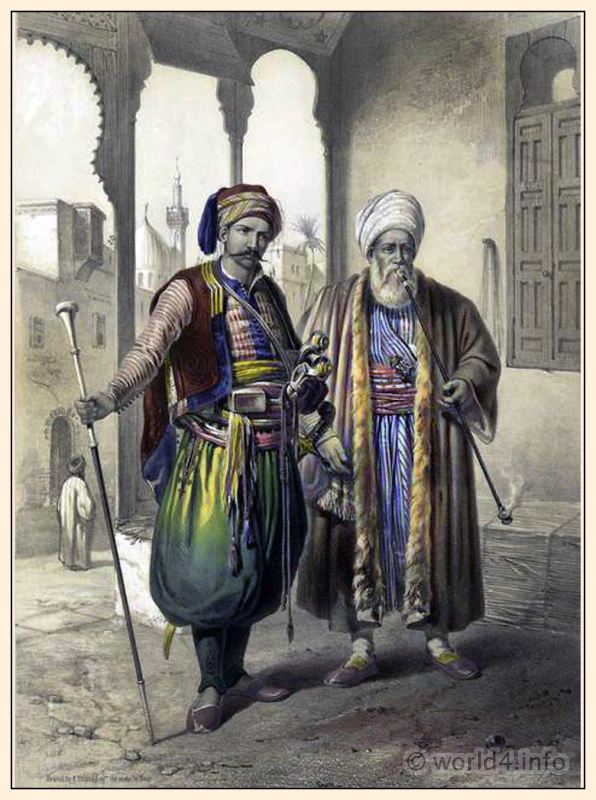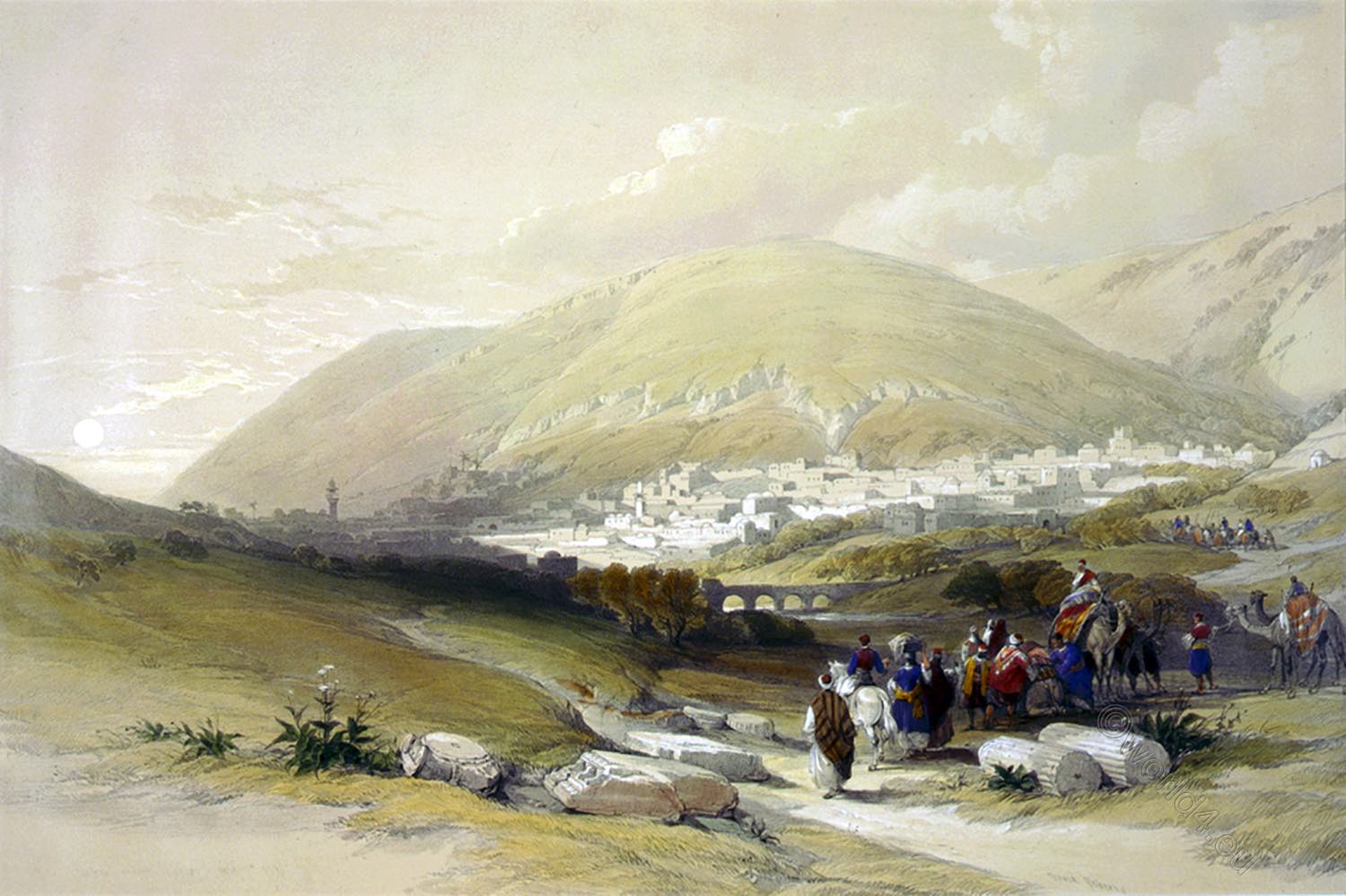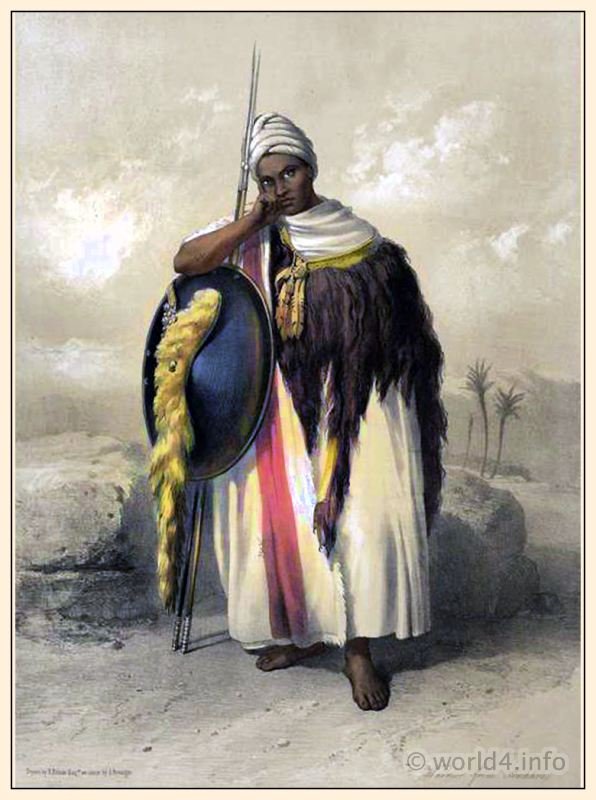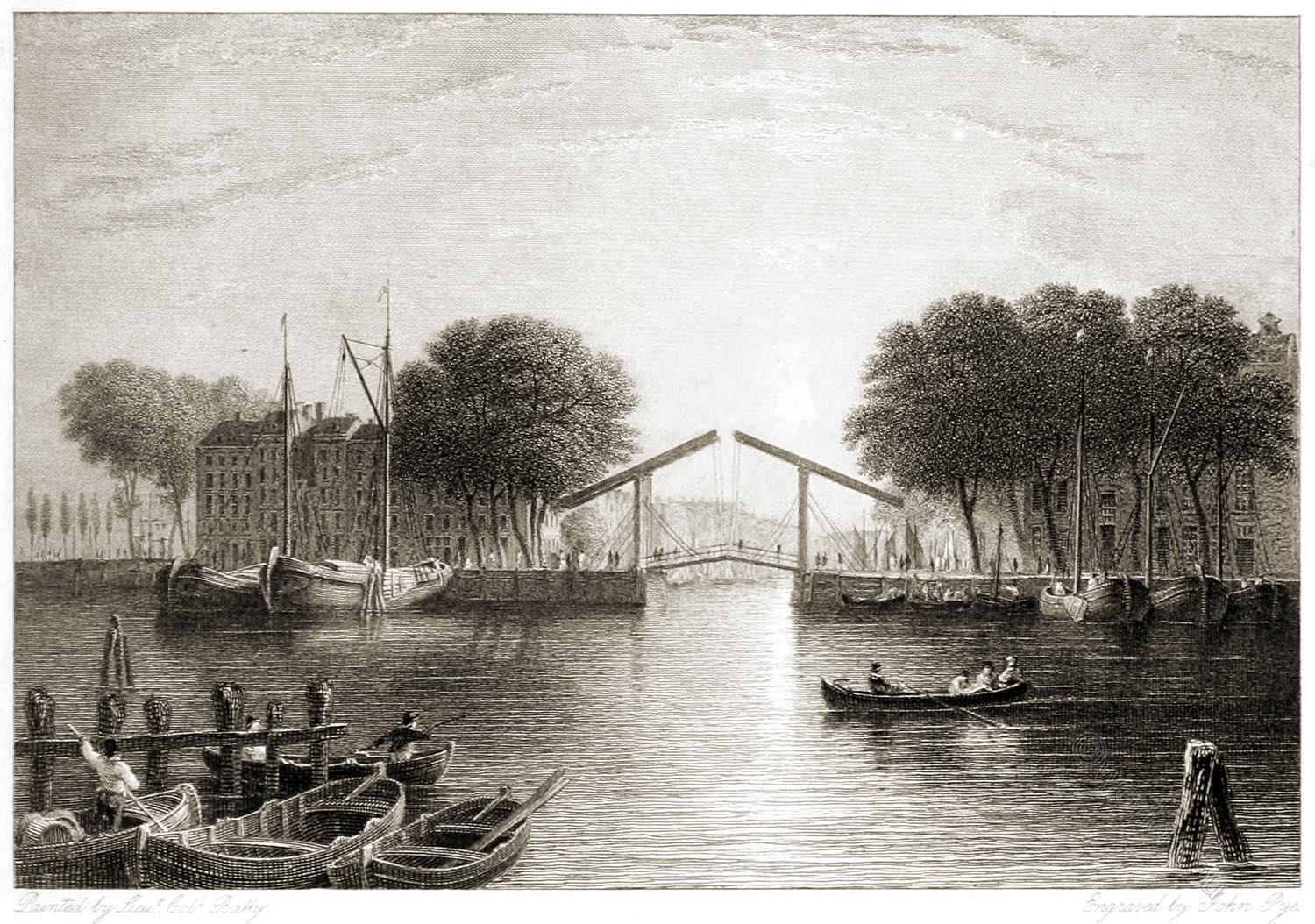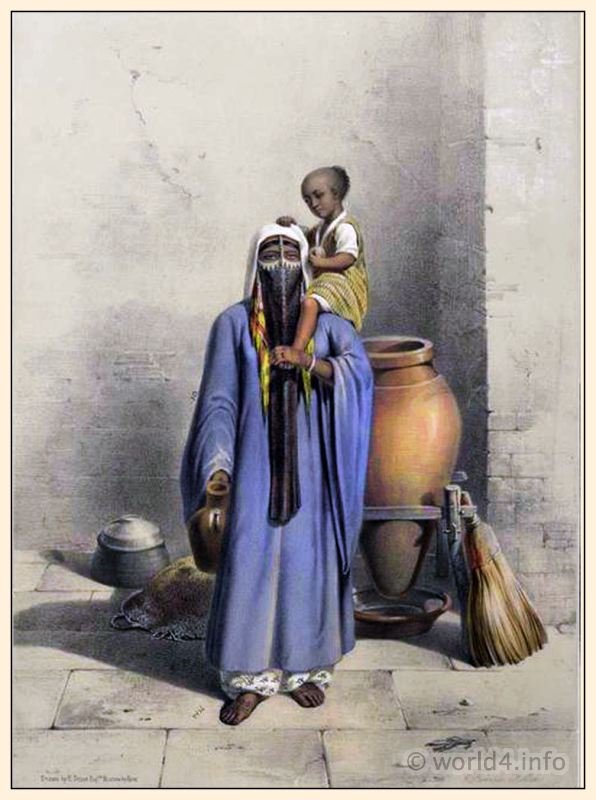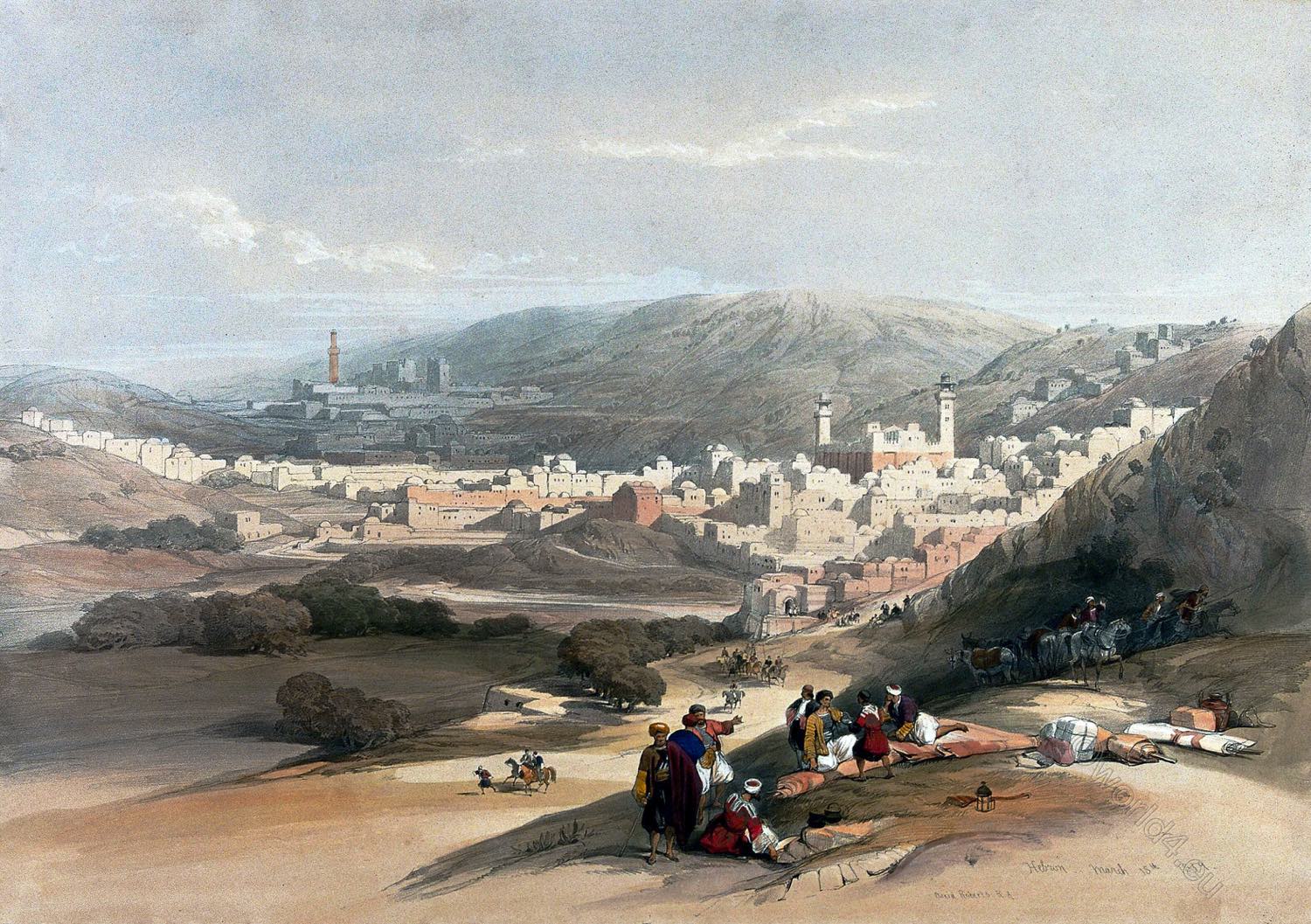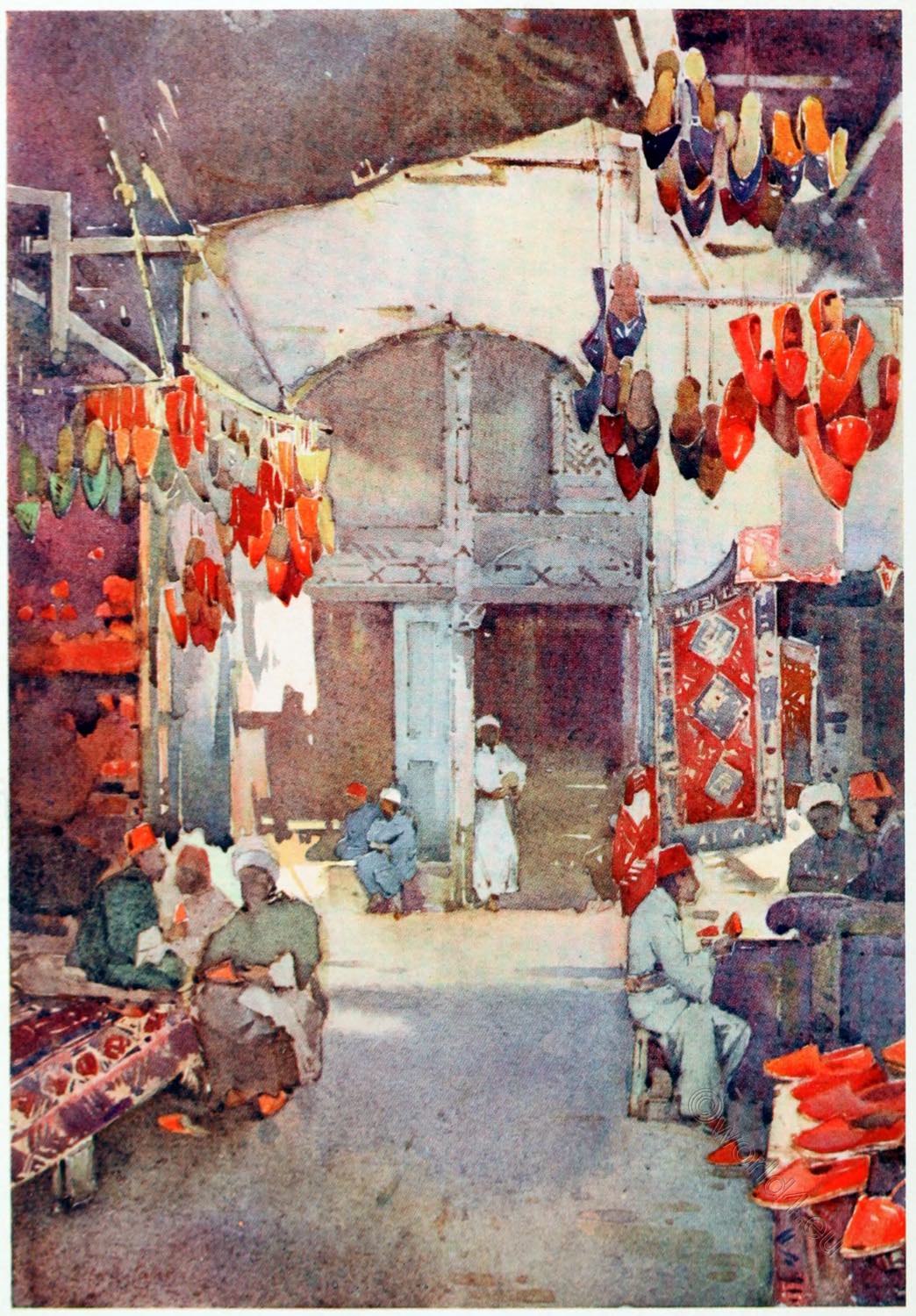
THE SHOE BAZAAR, CAIRO
Painted by Ella du Cane
The name of “bazaar” has been given by Europeans to the narrow streets with shops devoted entirely to one trade. The Egyptians call them “Suk” or souk (alternative spellings are Soq, Sook, Soukh or Souq): thus the Sûk-el-Gawharêgûr is the market of the jeweller, or the Suk-el-Guzmah or shoe market.
Here the red and yellow leather shoes which are in daily use among the natives are offered for sale, strung up on strings, in shops not more than a few feet square, where keen bargaining takes place before a pair of shoes changes hands.
Note by Florence du Cane
The souk or bazaar in oriental cities.
Cairo is home to a large souk called Khan el-Khalili. Located west of the Saiyidna-el-Husain Mosque, the market is considered the largest in Africa and was founded in the 14th century on the site of a former Mamluk cemetery as a caravanserai and trading yard. The name goes back to its builder Emir Jarkas el-Chalili, who came from Hebron (Arabic name el-Chalil) and therefore bore the name el-Khalili.
Souks are an almost universal feature of an oriental Arab city and usually also its economic centre. Unlike European business and craft districts, souks are generally uninhabited and single-storey.
In classical Islam it constituted – together with the Mosque and the Palace of Power – the third functional center of the Muslim city. Unlike the Mosque or the Palace, the souk almost never occupied the center of the city because of the invasiveness of certain arts and professions that could cause disturbance, for noise or unpleasant odors, to the orderly and quiet life pursued by the public authorities.
As in mediaeval Christian cities, the economy was structured on a corporative basis and each art or trade was represented by a Master, assisted by assistants endowed with experience and authority. They were responsible for the correct running of trade, also thanks to the concrete help of the muḥtasib (superintendent) or the ṣāḥib al-sūq (“lord of the market” – from which the ancient Spanish zabazoque), who, with the power of the annonaria police, ensured the correct use of weights and measures, repressing all fraud with the intervention of a specific police force (shurṭa) that could impose fines or arrest the guilty.
The different types of goods determined the structure of the souk, which developed, within protected walled structures, according to a pattern that could be defined as concentric circles, with the professions and arts related to non-perishable goods arranged in the centre (this could be the case of goldsmiths and perfumers), with those with a medium impact in the second circle (dry foodstuffs, textiles, footwear) and with the more “polluting” arts and professions to the outside (tinsmiths, dyers, butchers, fishmongers, live retail animals). Each trade thus operated alongside that of its competitors, thus making it easier for customers to make comparative assessments.
Moreover, for security reasons, they are usually organised in such a way that the “nobler” crafts, such as jewellers, goldsmiths and silversmiths or silk merchants, are located in the middle of the market area. In more recent times, the high-turnover retail trade has often prevailed over the crafts on the busier streets – traditionally, workshop and sales outlet were in one place.
Traditionally, souks have not only been places of buying and selling, but also central spaces of social life. For this reason they appear profusely in all traditional literature as settings where plots or parts of plots are developed. In The Arabian Nights, to cite just one example, we have the story of Grain of Beauty in which the protagonist’s father, Chamseddin, is a trustee of the Cairo souk.
The increasingly rare markets organised by farmers in open spaces outside villages are also called souks. The analysis of souks is important economically, socially and archaeologically. As the centre of wholesale and long-distance trade, as well as financial affairs, the Chan building form has emerged. This is a multi-storey building with a lockable courtyard attached to most of the souks. The alleys of many souks are fully or partially covered to protect goods and visitors from sunlight and heat.
At the beginning of the 20th century, the souks increasingly lost their importance and became a cheap place for immigrants to live. They mostly competed with western-oriented neighbourhoods that offered more pleasant but also more expensive housing alternatives.
With its oriental charm and “exotic” shopping experience, the souk became increasingly attractive to tourists. It also experienced an increasing appreciation by the local population, which led to sometimes very costly restorations of the preserved buildings in order to be able to continue using them.
Source: The banks of the Nile by John A. Todd. Painted by Ella du Cane (1874-1943). Notes on the Plates by Florence du Cane (1869-. London: Published by Adam & Charles Black, 1913.
Related
Discover more from World4 Costume Culture History
Subscribe to get the latest posts sent to your email.

